 |

| |
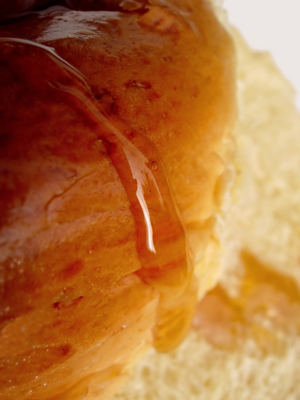 Time to give up the sticky generics and go for the greats: raw, varietal honeys (a.k.a. gourmet honey) from the internationally renowned beekeepers of Savannah Bee Company. Even this piece of challah knows it is more glorious with “the real deal.” Time to give up the sticky generics and go for the greats: raw, varietal honeys (a.k.a. gourmet honey) from the internationally renowned beekeepers of Savannah Bee Company. Even this piece of challah knows it is more glorious with “the real deal.” |
| WHAT IT IS: Rare, raw honey from Georgia and other Southeastern states. |
| WHY IT’S DIFFERENT: These are varietal honeys that are difficult or impossible to find elsewhere, produced by dedicated beekeepers who move their hives to the most remote areas to follow the nectar. |
| WHY WE LOVE IT: Purity of honey flavor, and the pronouncement of varietal flavor in each particular honey. If you eat honey regularly, these honeys will make you pause. They’re like discovering new favorite wines: even if you like what you were currently drinking, you know you have found something better. |
| PURCHASE AT: Find retailers at SavannahBee.com. |
|
|
 |

Savannah Bee Company Honeys: Queen Bee
CAPSULE REPORT: There’s honey, honey and honey. The first is the generic, pasteurized, blended stuff of supermarkets, called “pure” honey, “blossom” honey or “multifloral” honey (all honey comes from blossoms, a.k.a. flowers). The second is varietal honey that names a specific source—clover, orange blossoms, white sage, wildflowers et al. As with any other product, there are different levels of quality; hopefully this honey will show at least one dimension of the varietal’s character. The third is rare, varietal honey, carefully tended by artisan beekeepers and delivered to you as raw honey—not heated or treated but with multiple layers of flavor. Call it “gourmet honey,” just call it over and spoon some out of the jar. As soon as you taste it, you know how different it is. Just as not all cabernet sauvignon rootstock is created equal, the nectar from some orange blossoms produces far superior orange blossom honey; and beekeepers, like winemakers, have different levels of skill in handling the bees and extracting the honey.
When Savannah Bee Company’s Ted Dennard decided to become a full-time beekeeper, the world became a sweeter place. His rare varietal (or monofloral) honeys are sought by aficionados the world over. Once you taste the distinct flavors of his black sage, tupelo, orange blossom, sourwood and raspberry honeys, you will never buzz around lesser honey again.
|
Sweet Reading
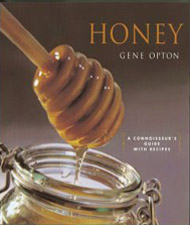 |
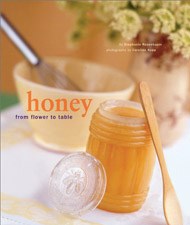 |
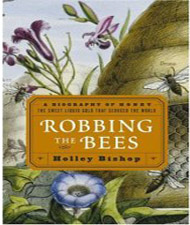 |
| Honey: A Connoisseur's Guide With Recipes, by Gene Opton. Learn in detail how honey is produced, and the wide number of varieties of honey. Eighty recipes for using honey emphasize cookies, cakes and similar desserts, but vegetable and meat dishes are also included. Click here for more information or to purchase. |
Honey: From Flower to Table, by Stephanie Rosenbaum. Learn about the process that turns flower nectar into honey, plus the history and symbolism of honey. Cooking and crafting chapters include recipes for honey delicacies and simple crafts like honeycomb candles and lip balms. Click here for more information or to purchase. |
Robbing the Bees: A Biography of Honey—The Sweet Liquid Gold that Seduced the World, by Holley Bishop. Part biography of a professional beekeeper, part history, of bees and honeymaking, this book is a celebration and a love letter to bees and their sweet product. Click here for more information or to purchase. |
Queen Bee : Savannah Bee Company Honeys
INDEX
Click on the black links below to visit other pages.
|
MORE TO DISCOVER
|
Overview
When you dab an exquisite artisanal honey on a buttered English muffin, say thanks to the ancient honey bees, diligent team players who have been working together in hives for 30 million years, and to the modern artisan beekeepers who continue to ply their craft despite the temptations of less backbreaking and hazardous work. There are many different kinds of honey—300 varietals made in the U.S. alone. Real lavender honey, blueberry honey or raspberry honey is made from the nectar of the blossoms of those plants.* Honey takes on the flavor of the blossom, not of the fruit, by the way. Sometimes the two flavors are similar, sometimes not. Blueberry honey doesn’t taste like a spoonful of blueberries, but tastes generally fruity with a hint of blueberry on the finish. Buckwheat honey, on the other hand, is unmistakably buckwheat, as if someone had richly infused the honey (but it’s natural).
*There are products on the market called lavender honey, raspberry honey et al that are simply generic honey infused with flavor—read labels carefully.
The Savannah Bee Company is a specialist in the rare honeys of Georgia and the southeastern U.S., including black sage, orange blossom, saw palmetto, sourwood and tupelo. Ted Dennard and his team are beekeepers extraordinaire, bringing the honey to market in its pure and natural state—raw honey, as opposed to that which has been pasteurized for mass marketing, to prevent crystallization on the shelf.
When you look at a jar of honey, you may visualize bees buzzing in hives, and think of all the insect effort it takes to make the product (in fact, the bees will fly a cumulative distance of more than 55,000 miles—more than the distance to the moon and back—to make one gallon, or 12 pounds, of honey). But think of the human effort to move the hives to remote sites to connect bees to blossoms.
The Savannah Bee Company staff goes to great efforts to move their bees from location to location to find the rare blossoms that create the best honeys. They literally follow the blooms, chasing the opening spring flowers and their nectar flow, carting their colonies hundreds of miles to find the exact meadows and riverbanks where the bees can get to work to create great honey. Some plants blossom for many weeks, some for just a few. Combine a rare plant with an ephemeral blossom, and you have just two weeks a year for your bees to gather the nectar from which they make precious amounts of that honey.
|
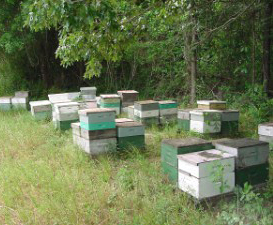
The Langstroth bee hive, shown above, is the standard used in many parts of the world for beekeeping. In 1853, the Rev. L. L. Langstroth, published a book with his observation that bees will not bring the surfaces of two combs closer together than a “bee space,” which is about a quarter of an inch. Prior to his discovery of the bee space, bees were hived in skeps (conical straw baskets) or “gums,” hollowed-out logs that approximated the natural dwellings of bees. Langstroth constructed his hives so that the frames in which the bees were to make their combs were mechanically separated from all adjacent parts of the hive—the walls, the floor, the cover and other frames—by a quarter of an inch.
|
The beekeepers begin in April in the deep swamps of Georgia, setting their colonies on the banks of the Ochlockonee River to gather nectar for tupelo honey—the blossoms are open for only two or three weeks. In May, the bees are brought to the coastal forests for the flowering palmetto trees. In June, the hives are hauled up into the North Georgia Mountains to make sourwood honey. The sourwood trees had not blossomed in Georgia since we first tasted the sourwood honey in 2003. Had we only known, we would have enjoyed ours more sparingly. The black sage trees finally bloomed last spring after a few years’ hiatus, and last fall we snatched up several jars. This past spring, the sourwood trees cooperated: there will be sourwood honey this fall!
Continue To Page 2: Varietal Honey
Go To The Article Index Above
Do you have friends who would enjoy THE NIBBLE?
Click here to send them an invitation to sign up for their own copy. |
ABOUT THE NIBBLE. THE NIBBLE™, Great Finds For Foodies™, is an online magazine about specialty foods and the gourmet life. It is the only consumer publication and website that focuses on reviewing the best specialty foods and beverages, in every category. The magazine also covers tabletop items, gourmet housewares, and other areas of interest to people who love fine food.
© Copyright 2004-2026 Lifestyle Direct, Inc. All rights
reserved. All information contained herein is subject to change at any time
without notice. All details must be directly confirmed with manufacturers, service
establishments and other third parties. The material in this newsletter may not
be reproduced, distributed, transmitted, cached, or otherwise used, except with
the prior written permission of Lifestyle Direct, Inc.
|
 |
|
 |



 Time to give up the sticky generics and go for the greats: raw, varietal honeys (a.k.a. gourmet honey) from the internationally renowned beekeepers of Savannah Bee Company. Even this piece of challah knows it is more glorious with “the real deal.”
Time to give up the sticky generics and go for the greats: raw, varietal honeys (a.k.a. gourmet honey) from the internationally renowned beekeepers of Savannah Bee Company. Even this piece of challah knows it is more glorious with “the real deal.” 


